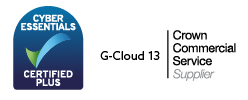
Route 101’s cloud based contact centre and communications platforms are built in the cloud, meaning they’re scalable, flexible, and fast to deploy. Perfect for businesses looking to scale securely, or those concerned with availability. Plus, with a complete suite of integrated workforce optimization (WFO) capabilities, you can restore your full business operations remotely within days.
Get in Touch
Safe service continuity
Agent performance & compliance
Service level assurance

The last thing you want is a large-scale network or platform outage resulting in a loss of service. That’s why it's business critical that your supplier provides complete network and platform resilience. The multi-tenant architecture of our platforms means you can be confident in 99.99% availability, with round-the-clock monitoring ensuring their security and integrity.
Our modern environment means contact centres need to be more flexible than ever, and basing your contact centre platforms in the cloud means your business can take on additional members of staff when your call volumes increase, and reduce your subscriptions when you need less support.


Helping your agents to safely, and productively, work from home is an essential part of business continuity planning. Drawing on a global, geographically redundant cloud infrastructure, Route 101 can help your business to shift work across locations, whilst handling large swings in interaction volumes and ensuring service reliability for you and your customers.
Give your agents the tools to work from anywhere and empower them to engage with customers on any channel.
Request a discovery call
Allowing agents to work the hours/days that are more convenient to them yields greater productivity, reducing turnover and increases agent satisfaction.
Flexible working also gives your business the ability to cover shorter shifts when agents work remotely.
Research consistently shows that remote workers (or telecommuters) report significantly less stress when working remotely, as well as higher productivity levels. Remote working also has the potential to cut the costs of managing your workforce.
By giving employees more freedom in where they work, organisations can help to reduce the work-related burdens that we face every day – for example, exhausting commuting times.
Many organisations see spikes in inbound contact centre volumes during a disaster. Route 101 can help you to quickly implement flexible remote work policies across the contact centre, whilst maintaining continuity for agents and customers.
Our call routing and management tools can help you to:


Contact centres need to be prepared for all sorts of unforeseen events and create a business continuity/disaster recovery plan that accounts for all scenarios – whether that’s a loss of technology, loss of staff, or a loss of premises.
When creating a business continuity plan, there are some key steps to ensure you’re prepared for all eventualities.
Assemble a disaster recovery team to take overall responsibility for testing, reviewing, and updating the business continuity plan.
Understand and evaluate your main dependencies for each contact centre process so you can determine the impact of disasters. List each key business process and note the main dependencies for each.
Conduct a risk and impact assessment to determine what dependencies could be taken away, and how long it might take you to recover.
Plan your business continuity plan – including how you will assess the threat, immediate steps that should be taken, and a communication plan for stakeholders.
Plan an impact analysis phase to help determine if processes can go ahead as usual in the event of disaster.
Plan your recovery phase, including transferring critical business processes, initiating necessary telephony changes, notifying employees and more.
Plan for your “Business-as-Usual” phase as you begin to go back to normal.



Route 101 Ltd.
The Conifers, Filton Rd
Hambrook
Bristol BS16 1QG

All Rights Reserved / Route 101 Ltd. / Company Registration Number 08325675